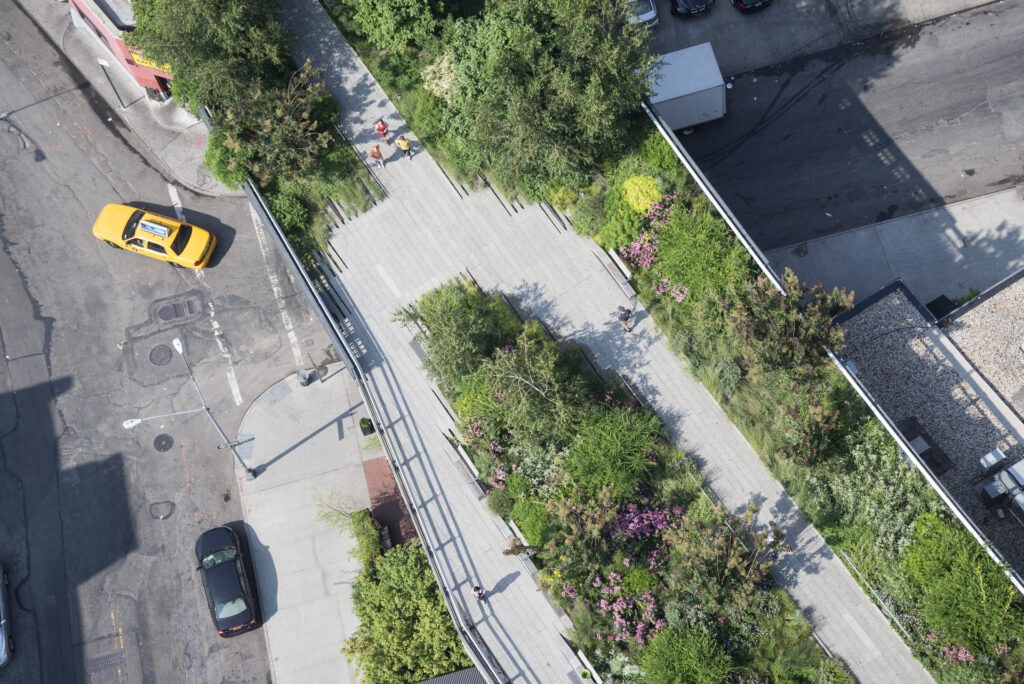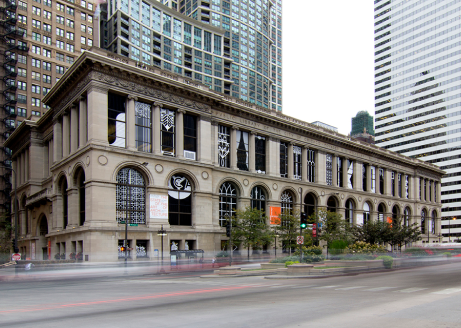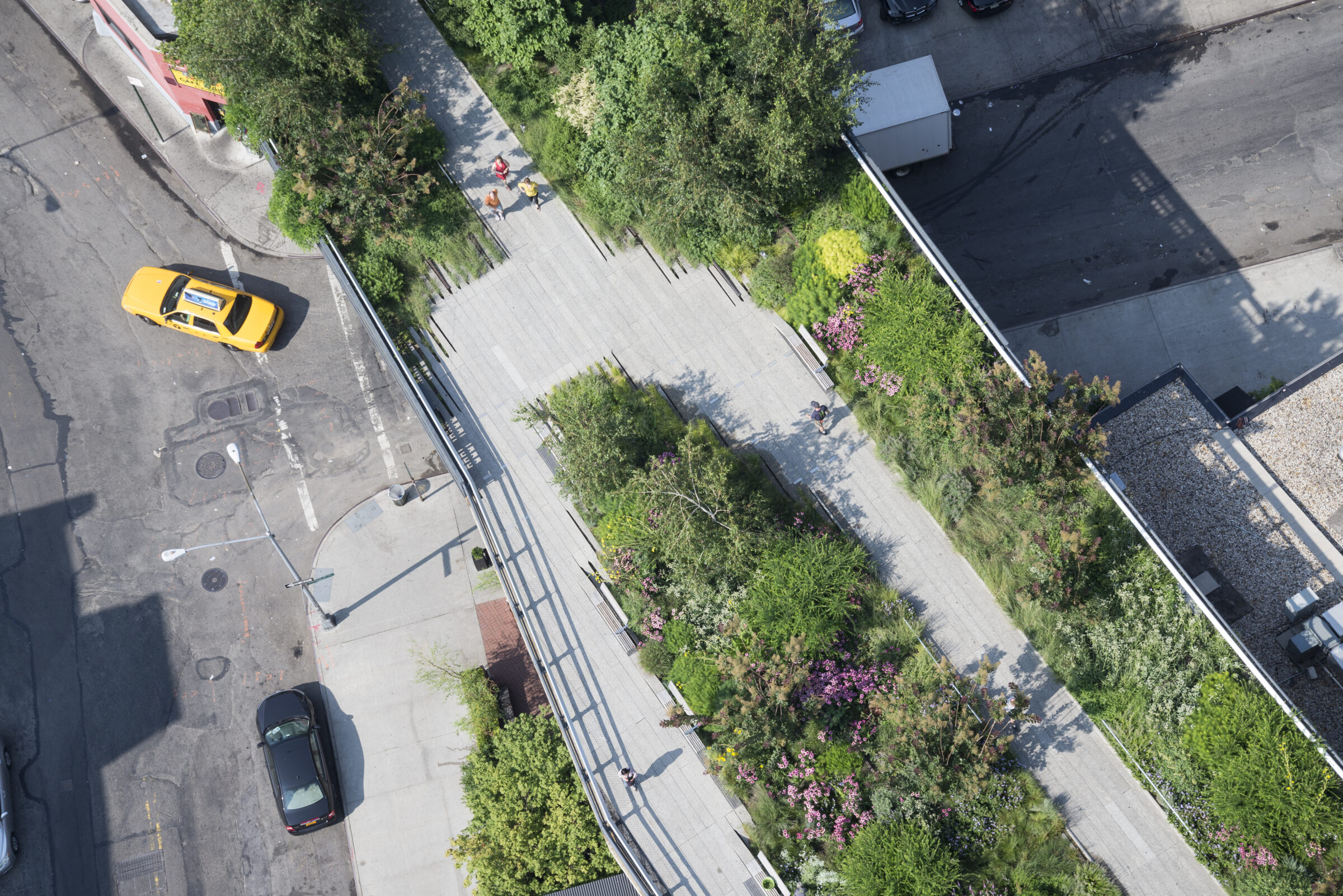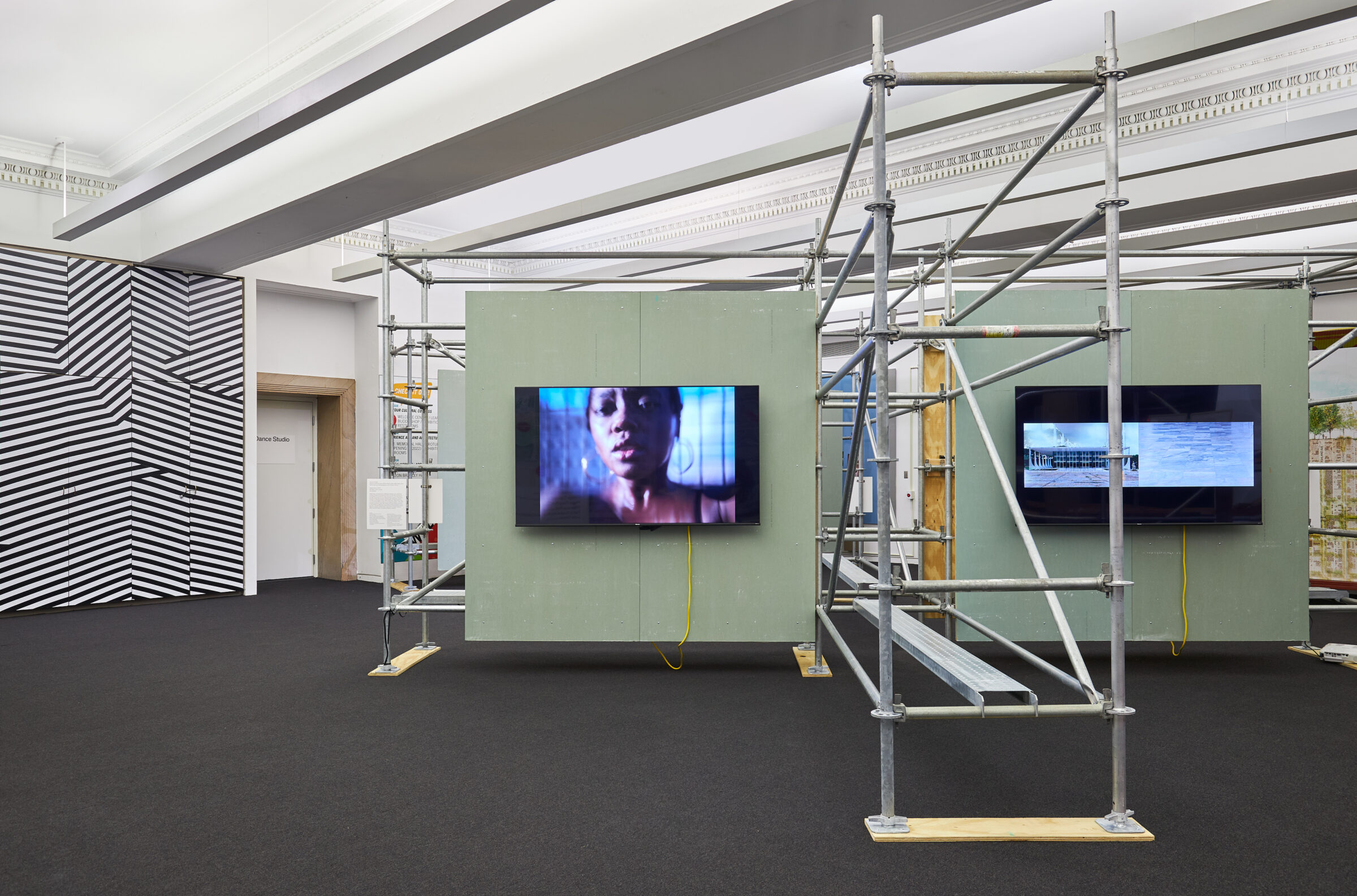The High Line

New York, United States
WebsiteThe High Line is both a nonprofit organization and a public park on the West Side of Manhattan. Through our work with communities on and off the High Line, we’re devoted to reimagining the role public spaces have in creating connected, healthy neighborhoods and cities.
Built on a historic, elevated rail line, the High Line was always intended to be more than a park. You can walk through gardens, view art, experience a performance, savor delicious food, or connect with friends and neighbors-all while enjoying a unique perspective of New York City.
Nearly 100% of our annual budget comes through donations from people like you, who help us operate, maintain, and program the park.
The High Line is owned by the City of New York and operates under a license agreement with NYC Parks.
CAB 5 Contribution
Project Overview
The High Line presents a selection of videos by contemporary visual artists whose work references different forms of architectural language. The expression “Writing about music is like dancing about architecture” is used to communicate the futility of translating the experience of music into words. The exhibition Dancing About Architecture shares works by four artists—Young-junTak, Gerard & Kelly, and Clarissa Tossin—who take up the challenge of interacting with and interpreting the built environment through the human body.
Additionally, High Line Art presents The Gift by Jasmina Cibic, an artist who focuses on how Modernist architecture has been used to establish various state identities, particularly during Europe’s moments of ideological and political crises and its attempts at transnationalism.
This presentation is curated by Melanie Kress, former High Line Art Curator.
Project Overview
White Marble Everyday, 2009
Clarissa Tossin
b. 1973, Porto Alegre, Brazil. Lives in Los Angeles, California
Two-channel HD video 5 minutes 42 seconds
With White Marble Everyday, artist Clarissa Tossin explores and deconstructs the utopian ideals embodied in the art, literature, architecture, and philosophy of high Modernism, and reflected in the history of Brasília, the federal capital of Brazil. Constructed to displace the historic capital of Rio de Janeiro in 1960, Brasília has been celebrated internationally for its radical conception of a utopian city, following the master plan of Lúcio Costa and shaped by the visionary architecture of Oscar Niemeyer.
White Marble Everyday focuses on the soaring, sculptural forms of Niemeyer’s Federal Supreme Court building while tracking the anonymous laborers tasked with keeping facade marble pristine.
Tossin finds grace and choreography in this arduous and repetitive task as she compresses the worker’s daily four-hour ritual to less than six minutes. A champion of Brazil’s Communist Party, Niemeyer declared his architecture was “for the people,” but as Tossin demonstrates, his creations could be sustained only by the people Niemeyer claimed to serve.
Project Overview
Bright Hours, 2023
Gerard & Kelly
Brennan Gerard, born 1978 in Piqua, Ohio; Ryan Kelly, born 1979 in Drums, Pennsylvania. Live in Paris, France
4K video, color, sound 25 minutes
Bright Hours re-imagines the 1929 affair between iconic performer Josephine Baker and modernist architect Le Corbusier, blurring the lines between fact and fiction. Standing in for the cruise ship where the affair purportedly occurred, Gerard & Kelly present Le Corbusier’s postwar architectural triumph, Cité Radieuse, a Marseille housing complex, as the stage for the unlikely relationship. Bright Hours asks us to reconsider Baker’s impact on the architect’s practice—their affair typically a footnote in both their stories—offering instead a narrative
in which Baker changed how Le Corbusier viewed architecture, color, and form. The work features performances by Jeanne Balibar, Emara Neymour-Jackson, and Germain Louvet, with an original score by Moses Sumney based on Josephine Baker’s songbook.
Credits:
Courtesy of the artists and Marian Goodman Gallery
With, Jeanne Balibar, Emara Neymour- Jackson, Germain Louvet, David Paycha
Written by Gerard & Kelly with Loïc Barrère Director of photography, Clément de Hollogne Editor, Grégoire Brice Costumes, Glenn Mban Music by Moses Sumney Production, & Compagnie Coproduction, Caviar with the participation of HVH Films
Powered by Dropbox
With the support of the French Ministry of Culture – Direction générale de la création artistique (DGCA); Carré d’Art – Museum of Contemporary Art, Nîmes; Fondation d’entreprise Hermès in the framework of its New Settings programme; CCN – Ballet National de Marseille; Harbor Picture Company; Justine Schreyer Lewin & Howard Lewin Associate Producers, Lauri Michelle Firstenberg, Idee German, Taylor Houghton, Jon Hutton, Charles Klein, Geoffrey Kristof, John Schwart
Project Overview
The Gift, 2021
Jasmina Cibic
b. 1979, Ljubljana, Slovenia. Lives in London, England
Single channel 4K video, stereo 27 minutes, 56 seconds
The Gift investigates how gifting is embedded within the landscape of Europe’s cultural identity and addresses the concept of a political gift: a donation of artistic, architectural, political or philosophical thought that promotes and adheres to national and ideological structures. The storyline follows three men—the Gifts of Art, Music and Architecture—as they participate in the final round of a competition that seeks to find the perfect gift for a divided nation; one that must be both aesthetically impressive and politically adequate. The project is filmed across paramount examples of architectural donations: Oscar Niemeyer’s French Communist Party Headquarters in Paris (a gift from the architect to PCF), Palais of the Nations in Geneva (composed from gifts by the international community), Museum of 25th of May Belgrade (a gift to Tito from the nation), and Mount Buzludzha Bulgaria (a gift from the nation). The Gift investigates the role culture plays as a Trojan horse for covert diplomacy and political interest.
Credits:
Co-commissioned and co-produced by FLAMIN – Film London Artists’ Moving Image Network (with funding from Arts Council England), steirischer herbst ’19 and macLYON and co-produced with Waddington Studios London.
Supported by Muzeum Sztuki in Łódź, Cooper Gallery DJCAD, University of Dundee; Northern Film School; UGM Maribor Art Gallery; Museum of Yugoslavia; United Nations Geneva; Espace Niemeyer and Palace of Youth, Warsaw.
Project Overview
Wish You a Lovely Sunday, 2021
Young-jun Tak
b. 1978, Seoul, South Korea. Lives in Berlin, Germany
Single channel HD video, color, stereo sound 18 minutes, 38 seconds
Wish You a Lovely Sunday boldly juxtaposes two distinct spaces— a church and a queer club. For this filmic work, two choreographers and two dancers were paired up to create a site-specific choreography: one for Kirche am Südstern, a church, and the other for SchwuZ, a queer club, both in Berlin. Each pair was also assigned a different Bach piano piece for four hands. When the choreography was complete, after days of rehearsals, the pair’s designated venues were swapped. The participants did not know their newly assigned locations until the day of filming and had to quickly reconfigure their choreographies accordingly.
In Young-jun Tak’s 18-minute video, we follow the protagonists’ struggles, passion, and commitment in trying to adjust their choreographies to fit into their new contexts. Although churches and queer clubs ostensibly function quite differently and serve different purposes, both spaces play host to ritual behavior, and encourage certain attitudes inherently linked to the space itself. Both venues are fundamentally community-oriented, seeking to offer comfort
and welfare for either the visitor’s mind or body. In Wish You a Lovely Sunday, the continuous change of scene between the two spaces, in conjunction with the dancer’s presence, movements, and physical dialogue with one another, achieves a seemingly impossible convergence of religious practice and club culture.
Credits:
Courtesy of the artist
Supported by Arts Council Korea, Berlin Masters Foundation, Burger Collection, and Center Stage.
Extended Credits:
Director and Producer Young-jun Tak Dancer Yi-Chi Lee
Choreographer Jee Chan Dancer Daniel Norgren-Jensen Choreographer Liam Warren Line Producer Elsa Triquet-Rey
Director of Photography Jubal Battisti Second Camera Operator Pippa Samaya Gaffer Alex DePew
Sound Recordist Robert Klemm
Editor Clémentine Decremps Sound Mixer Guy Henderson Colorist Sergej Jurisdizkij
Subtitles and Trailer Editor Théo Perrot Locations
Kirche am Südstern, Berlin SchwuZ, Berlin
Music
Lucas & Arthur Jussen—J.S. Bach: “Was mir behagt, ist nur die muntre Jagd” Cantata, BWV 208 (arr. Mary Howe for two pianos): 9. Schafe können sicher weiden (P) 2019 Molto Piano VOF, courtesy of Universal Music GmbH Lucas & Arthur Jussen—J.S. Bach: “Gottes Zeit ist die allerbeste Zeit,” BWV 106 (Transcr. for Piano Four
Hands by György Kurtàg): 2a. Gottes Zeit, ist die allerbeste Zeit (P) 2019
Molto Piano VOF, courtesy of Universal Music GmbH
Photographs at SchwuZ Jürgen Baldiga, Self-portrait
Jürgen Baldiga, Melitta Sundström, 1988
Supported by Arts Council Korea, Burger Collection, Berlin Masters Foundation and Center Stage.
Special Thanks
Nikola Andjelic, Xeni Ya Ang, Matthias Arndt, Maria Bartau, Monique and Max Burger, Ingar Dragset, Michael Elmgreen, Popo Fan, Margo Lauras, Cristian Merean, Yui Mikami, Agustín Pérez Rubio, Philip Preussen, Hans Joachim Richter-Rose, Alexander Shchurenkov, Ingo Spanka, Shang-Chi Sun, Harumi Terayama, Anthony Vouardoux, Woori Wang
Venue
View moreChicago Cultural Center
Address
78 East Washington Street, Chicago, IL
Neighborhood
The Loop
Description
The Chicago Cultural Center serves as one of the main exhibition venue sites for CAB 5, featuring projects from more than 80 participants from ten countries.
Opened in 1897, the Chicago Cultural Center is a Chicago landmark building operated by the Chicago Department of Cultural Affairs and Special Events and is home to free cultural exhibits and programming year-round.



